7
Automate
The Robots Aren't Coming; They're Here
When was the last time you went into a bank and wrote a check to get cash? Went into a travel agency to book a flight? Created a font to make a PowerPoint presentation? Can't remember? We can't either. All those things that people used to do have been automated away.
Now, look around you in the office where you work. See what Fred's doing? See what Anika's doing? Look at what you're doing. Lots of those things are about to be automated away too.
As we've pointed out repeatedly in the previous chapters of this book, we are riding on the cusp of a huge new wave of automated “white-collar” work that is going to fundamentally change what millions and millions of people all around the world do, Monday through Friday, 9 to 5.
For a manager, automating existing parts of your business with the new machine provides a once-in-a-generation opportunity to change the cost structure of your firm, while at the same time increasing the velocity and quality of your operations.
The automation of the processes at the core of your organization is going to make the last 25 years of Six Sigma, business process reengineering, and outsourcing seem like an overture before the main symphony begins. While each has provided many benefits (and some tears) along the way, all will pale in comparison to the impact of digitizing your core processes. In the next few pages, we cover several aspects of these automation dynamics: what automation actually is, which parts of your business are the best candidates to be automated, which jobs will be most impacted, the benefits you can expect, and the problems to avoid.
Like many things, the decisions you have to make in creating the future of your work boil down at the end of the day to simple economics. Applying new machines to your long-standing core business processes can drive not just 3% to 6% of cost out of portions of your operations but 30% to 60% (or more). If this sounds like hyperbole, recall our study that showed business already reducing costs by an average of 8% while growing revenue by an average of 10% (as shown in Figure 7.1 ). 1 These numbers add up, but there's more to come. Consider that companies such as TriZetto (a Cognizant health care software subsidiary) are using software robots to decrease health care payer costs by as much as 90% for some middle-office business processes. Other companies such as Blue Prism are applying bots to risk, fraud, claims processing, and loan management in banking to provide similar savings. 2 (See Figure 7.2 for a range of integrated industry-specific processes that are driving significant value.)
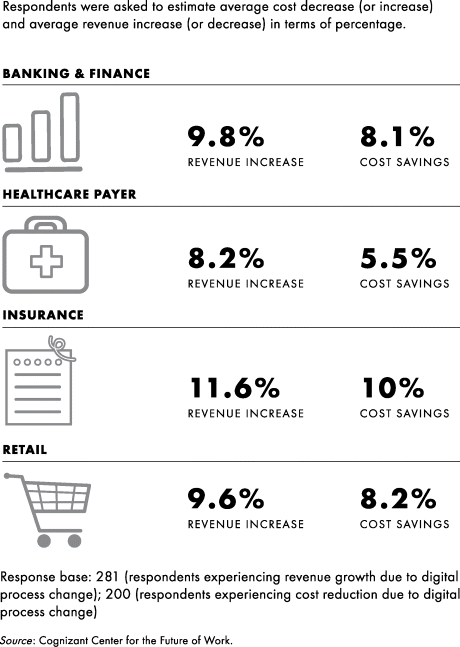
Figure 7.1 Digital Process Change Drives Significant Top- and Bottom-Line Impact
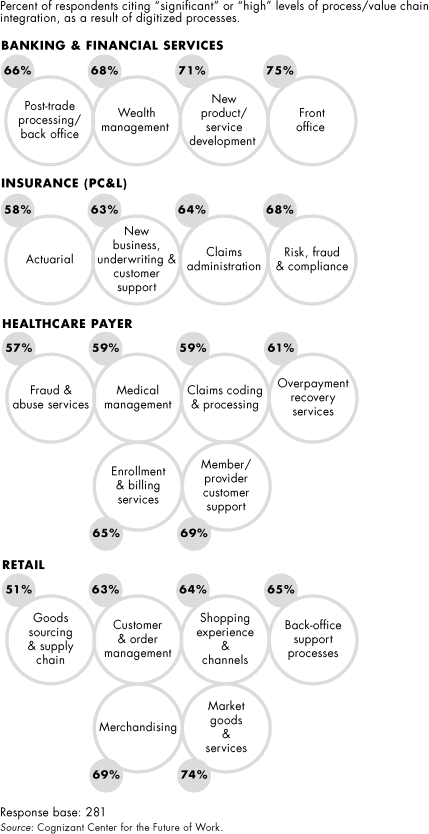
Figure 7.2 Putting Customers in the Center of the Value Chain, Digitally
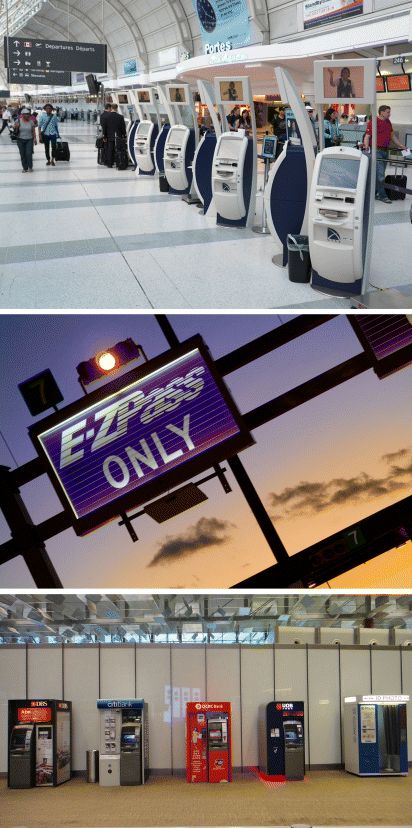
Figure 7.3 Familiar Automation in Our Daily Lives
Companies that are not taking advantage of automation are already paying a significant “laggard penalty,” which will inhibit future investment. 3 Very simply, if you wish to compete at the Amazon cost and the Google speed, you have to automate significant portions of your operations during the next few years.
Automation Is Not Optional
Automation is the first step in the journey of what economist Joseph Schumpeter termed “creative destruction”—that is, the tendency for industrial change to continuously destroy old economic structures and create new ones. 4 This may sound a bit drastic, but to make it a bit clearer and less melodramatic, let's take a trip back to a newsroom during the Reagan administration.
When Paul went to journalism school in the 1980s, newsrooms were full of people who could take information from different sources and turn it into a clear, concise narrative. The daily process of news-making—collection, reporting, fact-checking, synthesis, writing, and communicating—required people, lots of people, with education, judgment, and moxie. High IQ, high EQ (emotional quotient), and gallons of coffee.
Nobody in 1986 could have imagined that within 40 years, large portions of that activity would be replaced by a computer. But fast-forward to today, and that is exactly what is happening.
In the past year, you have probably read dozens of news stories written by a bot without realizing it. These have appeared in The Washington Post , USA Today , your local newspaper, and online news sources such as Yahoo! and ESPN. That real-estate listing in your neighborhood, local weather forecasts, and updates on your investment portfolio are increasingly being written not by a cub reporter but by software developed by companies like Narrative Science or Automated Insights. And this isn't isolated; it's happening at scale and continuing to grow. The Associated Press alone now publishes more than 20,000 software-written news stories a year, 5 and Automated Insights' software generated nearly 1.5 billion stories last year, personalized down to the individual level. 6
Many of these news stories aren't just simple regurgitations of data, like the weather forecast or stock performance. Automation platforms are generating nuanced language, woven into a true narrative that is engaging, friendly, fresh, insightful…in fact, well, human. For example, look at the beginning of a story on a local high school baseball game in Tennessee:
Oak Ridge Wildcat Matt McDaniel Belts Two Homers That Lead to 10–8 Win over Bearden
Tuesday was a great day for Matt McDaniel, as he clubbed two home runs to carry the Wildcats to a 10–8 victory over Bearden at Farragut High School in seven innings. 7
We could go on with more of the story, but you probably already get the point: that it was all written by a system of intelligence. The language is colloquial and aligned with both the local culture and the sport of baseball: “belts two homers,” “clubbed two home runs.”
Using software robot “journalists,” news organizations have automated some of the basic processes of standardized reporting, including data collection, synthesis, writing, and distribution. Once the baseball game's scorecard data is loaded into the bot, the only real “action” is telling the system to produce the written output and then sending it to the required distribution channel (which, as an aside, is automated as well). During the past few years, more than 10,000 stories on minor league baseball have been produced in this way. 8
Will news automation expand to the type of investigative reporting found on the front page of the The New York Times or The Wall Street Journal ? Not likely soon (although bots will certainly enhance the capabilities of investigative journalists). But it has already had a significant impact in helping an industry—one under massive cost pressure—find great levels of efficiency while providing additional value to its customers.
This story isn't just about automating journalism. This trend—applying automation technology to lower cost and improve productivity—is playing out in nearly every industry. Like it or not, your competitor across the street will soon gain the massive benefit of digital automation of core processes. If you don't keep pace, your cost structure will soon be unsustainable. Additionally, the savings generated through automation are what will then pay for the coming digital innovations. Fortunately, most of us have a running start.
We Have Been Automating with Digital for Some Time
The way in which Narrative Science or Automated Insights is automating journalism and other writing-based activities such as stock-performance reporting is very sophisticated and represents a new frontier of robotics. However, again, let's not forget we've been consuming automation for a long time, and much as with AI, once used it's not even noticed.
Consider the last time you went to the airport. During your drive, you likely passed through an E-ZPass tollbooth on the highway. Pulling into the airport parking lot, a machine dispensed your parking pass. In the terminal, you received your ticket and checked your bags at a kiosk. Then walking to your gate, you stopped at the ATM to get cash for your trip.
Some two decades ago, people were working at each of those spots: the tollbooth attendant, the parking garage attendant, the airline clerk, and the bank teller. Yet, many (but not all) of those jobs have been automated away (others have been enhanced with technology, which we'll cover later), and as a consumer you are probably grateful.
From your house to the airport gate, your trip was at least a half-hour faster than in pre-automation days. And is anybody really nostalgic about the tollbooth attendant, that poor soul who had to stand in that cold metal box for eight hours, making change, breathing in exhaust, all the while creating long lines for the rest of us? Not even the ex-tollbooth attendant wants that job to come back.
With the new machine, we are now crossing a line to making “intelligent” processes truly intelligent. The new waves of automation are popping up all around us, yet unlike the EZPass scanners over the highway, they are both so subtle and powerful (as in robo-journalism) that they may even go unnoticed.
Software Should Be Eating Your Core Operations
In your company, exactly where will such automation take place? The best areas are in your core operations, tucked away from customers. Automation's low-hanging fruit—massive cost savings found in the guts of your operations—is in what we refer to as your back and middle offices.
Your back office includes core functions that support any corporation: information technology, finance, human resources, facilities management, administration, and so on. The middle office encompasses the industry-specific core processes that run across your value chain: claims processing in insurance, logistics management in retail, trade settlement in banking.
What if you could run these functions or processes at half the cost and with double the throughput? With continuous improvement and quality control? And with all aspects—every transaction—fully instrumented and recorded? With the new machine, you can.
As with journalism, these areas of your business, at their core, comprise an information supply chain that gathers, synthesizes, transforms, and distributes data. The list of candidates, as shown in Figure 7.4 , is so extensive as to be surprising.
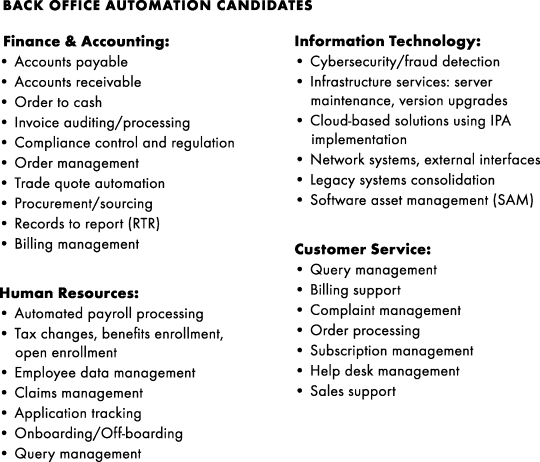
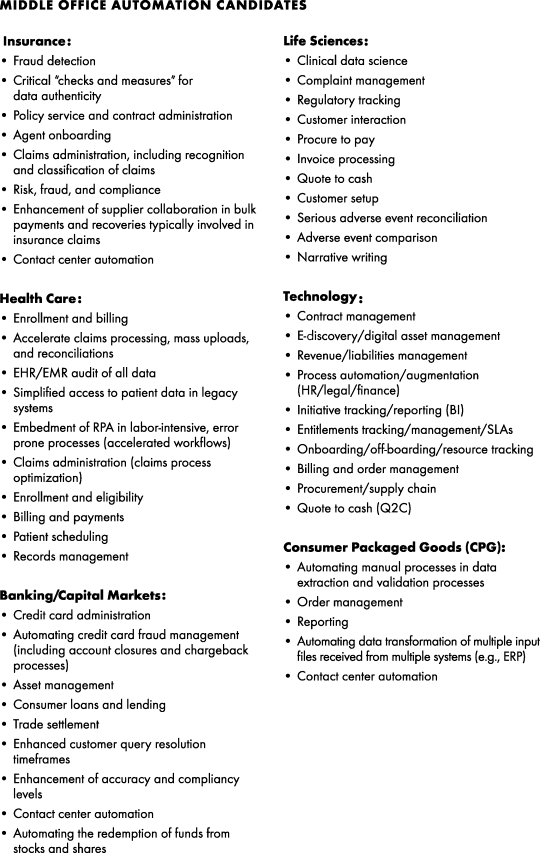
Figure 7.4 Potential Process Automation Opportunities
Each and every one of these areas has an intelligent automation solution focused on it and available for deployment: AiCure for clinical data science; Talla for HR management; NextAngles for compliance reporting in financial services. Kevin Kelly, founder of Wired magazine, has gone as far as to say the business plans of the next 10,000 Silicon Valley start-ups are easy to forecast: “Take X and add AI.” 9
While the following lists may be useful, given that these are all areas in which the new machine is being implemented for automation purposes, how do you find your best candidates? After all, the same process from one company to another may be structured very differently. One man's ceiling is another man's floor.
What to Do on Monday? Flick Your Automation-On Switch
Automation doesn't happen automatically. To that end, here are some lessons learned from those who have implemented process automation to help kick-start your automation initiatives. We have found these four “rules of the road” to be particularly useful:
- Set your 25%–25% automation imperative.
- Find your process-automation targets.
- Break through the “brass wall.”
- Build a repeatable process to obliterate work.
Set Your 25%–25% Automation Imperative
When you walk into work, (nearly) everyone has a purpose. Things hum along pretty much the same way, every day. On any given Monday morning, it's almost impossible to imagine work being done differently. But this is exactly what you need to do first. To begin any meaningful change using automation, you must suspend disbelief and imagine that things can be done in an entirely new way.
We think your baseline expectation should be cost reductions of 25%, with an associated productivity increase of 25%. Based on where the current average is today (around 15%), and the productivity improvement seen by some solutions (up to 90%), this should be your achievable near-term rule of thumb for initial robotic process automation efforts.
The reason the 25%–25% rule is effective is that it forces your team to think differently about “the way things are done around here.” When the goals are, say, 5% cost savings or 5% productivity gains, your team will continue to think in traditional ways. By raising the bar to 25%–25%, it will quickly become clear that the traditional cocktail of reorganization, outsourcing, and/or enterprise software will not be good enough. Only the digital automation of the process will deliver such results. Put simply, if you cannot gain at least 25% cost savings, you don't have a real “automation” solution. And if you cannot find 25% productivity increases, then the AI platform is not performing as it should.
In addition, you need to create a “no-excuses” environment. There will be those who push back, saying—for various reasons—“that can't be done.” Yet it's becoming clear there are no true hurdles with technology, cost, or scale. Once you set that goal, it's time to pick your spots.
Find Your Process-Automation Targets
When looking for your initial automation opportunities, which should be no more than two or three processes, you should “pick your spots” on the human-machine work continuum (see Figure 7.5 ). The best automation starting points are to the left of the continuum; in these processes, the machine can rapidly take over the majority of the work effort. As we described in Chapter 3 , these should be areas with a high percentage of work tasks that can be automated.
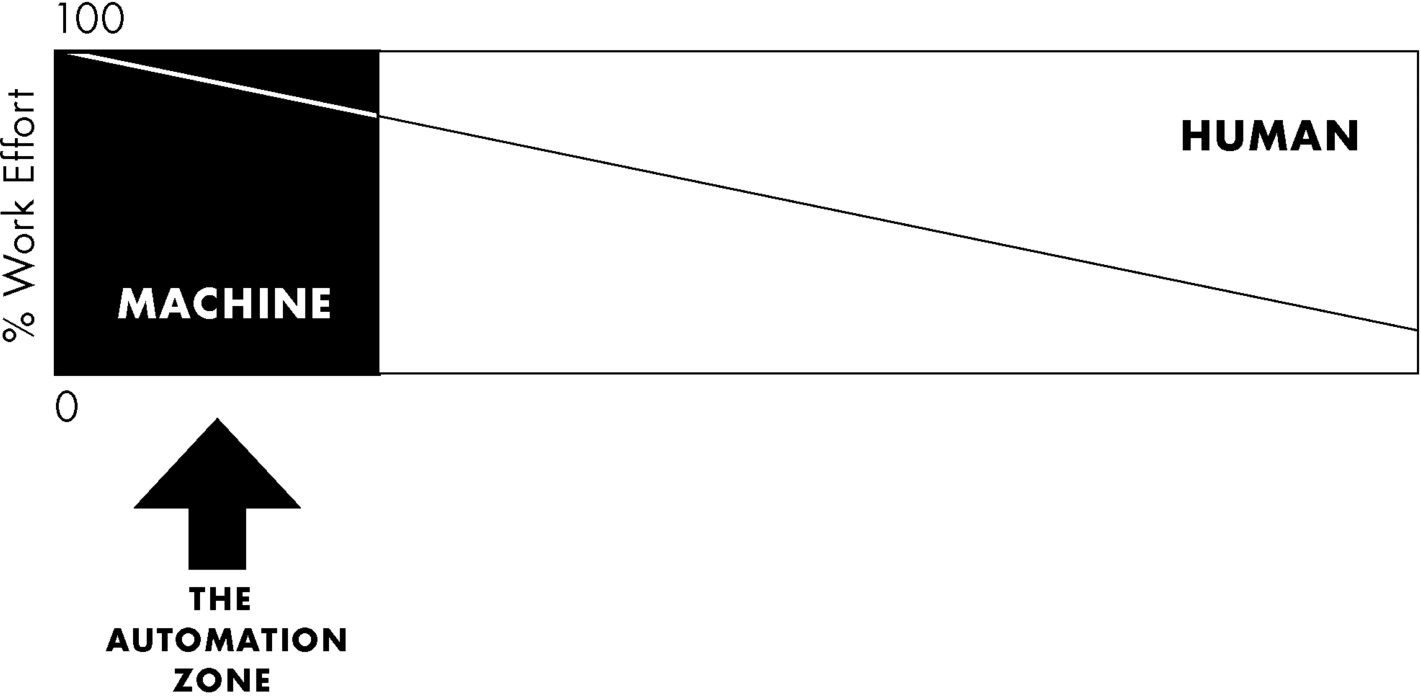
Figure 7.5 The Human–Machine Work Continuum
You need to be thoughtful when selecting your first automation targets, because the success, or lack thereof, of these initial implementations will dictate your subsequent enterprise AI initiatives. In our work with dozens of intelligent automation initiatives, we've seen that the successful ones all meet these simple criteria:
- Highly repetitive tasks: Find tasks that are highly repetitive but that occur at great scale within your organization. In short, look for activities that lots of people do every day. It could be processing an invoice, proofreading documentation, “picking and packing,” reconciling orders, answering the same questions over and over on the phone, and so on. Many of these tasks are already heavily automated; but many, in our observation, are not. Give yourself an honest answer: Are these areas—and many more—as fully automated as they could be? And is there intelligence in the current process? Any high-volume, highly repetitive task is a prime candidate for automation.
- Tasks with low demand for human judgment: Robots are great at calculation; humans less so. Conversely, humans are better at complex judgments, while AI and algorithms are not. Thus, jobs that lean heavily on decision trees (as opposed to ambiguity, intuition, insight, complex judgment) are strong candidates for automation. Machines may be able to inform decisions, but making more nuanced judgment calls will for the foreseeable future require a human touch. Conversely, any job that's mostly a series of “if-this-then-that” steps should be automated.
- Tasks requiring low levels of empathy: Order entry, claims adjudication, and invoice reconciliation are processes that require accuracy, consistency, and speed…but rarely empathy. If a bot can materially boost accuracy, consistency, and speed, many of us will settle for dumping the empathy factor. There are many areas within your organization right now to which that logic can be applied. It won't be hard to find them.
- Tasks generating and handling high volumes of data: Any process with the potential for generating lots of data, particularly customer data, should be automated for the sole purpose of collecting that data—your proprietary raw material. Humans, even if you can afford enough of them, will not be able to deal with the volumes of data when more and more “things” become smart and connected. As one simple example, imagine when all the street lights in a medium-size city are “smart” and able to report on not only their own “health” (i.e., whether they need replacing) but can also report on vehicle traffic flows. The volumes of data generated by this type of city-wide information “mesh” will be far beyond the human capacity to manage and make sense of it. In scenarios like this, automation won't replace people but will be a fundamental building block of creating new services and new insights that in turn will generate new value. In your organization, you should look for areas in which processes and workflows can be sensor-enabled and from which transaction data, previously unavailable, can be generated and managed.
Identifying your automation targets will give your teams a clear path to success, but there still remains a significant hurdle in managing change within your organization. That leads to our third rule of the road.
Break Through the “Brass Wall”
OK, you may have identified your initial automation targets, which are being pursued across your industry and clearly pass the 25%–25% threshold. Everyone in your company will see the wisdom of your decision and will be fully supportive, right? Wrong.
We learned this lesson 20 years ago during the aforementioned business process reengineering (BPR) wave. Back in the 1990s, acolytes of Michael Hammer proclaimed, “Don't automate. Obliterate!” The mantra was to find ways to deliver more with less—way less.
BPR, in theory, was very sound. Yet, in most cases, the practice failed (widely soiling the name of the movement in the process). Why? Quite often, the very middle managers who were responsible for architecting and implementing BPR initiatives soon figured out they were reengineering themselves out of a job. Politics and sabotage ensued.
In hindsight, this was the “brass wall” phenomenon, which was first seen with reengineering efforts within police forces of major cities in the United States during the 1980s. During the explosion of drug-trade-related violence, police chiefs in New York, Boston, Miami, and Los Angeles all looked to establish new ways of policing (e.g., more cops walking the beat, following the “broken windows” philosophy of addressing even the smallest of crimes, leveraging data for smarter policing, and flattening the organization model to remove bureaucracy and cost). The people at the top of the policing pyramid (e.g., the police chief and his or her team, as well as municipal leaders) were hugely supportive, looking to drive the change. Young police officers, living with the frustration of the existing system, were largely supportive of these new policing techniques, as well. Yet, such change efforts were initially halted by the “brass wall”—the officers sitting in the middle of the pyramid (those with brass on their shoulders), who were at least a couple of decades into their careers, had earned their way into seniority and the power structure, and could begin to smell their pensions. To them, the perceived personal threat of such changes greatly outweighed any potential community benefits.
This brass-wall phenomenon is reappearing in today's corporate environment with digital automation initiatives. Senior employees may recognize, “Yes, automation is good for our customers and investors, but is it good for me?” Rarely are their comments so direct. Instead, you will be hit with issues, such as “That's impossible.” “It's too expensive.” “We'll get in trouble with regulators.” “We've done it this way for 50 years, and it's working fine.” “Nobody can prove the ROI today.” “We should focus our efforts elsewhere.”
This is a tough problem to solve, but solve it you must. We recommend identifying the most vocal proponents of “business as usual,” talking to them, and explaining to them the reality of what automation means for the organization. Invite them to “get with the program” and help their colleagues get with it too. If they can't, avoid them and have them focus their energies elsewhere. And if there are no other opportunities available in other parts of your organization, let them go (of course following all the proper HR protocols). Achieving the goals of automation is too important to allow failure to happen due to the intransigence of employees whose skills and experience are no longer a good fit for work infused with systems of intelligence.
As we stated earlier, there will be blood; automation will hurt. Nobody said this would be easy. But automation is a fact of life, and facts of life need to be faced.
Build a Repeatable Process to Obliterate Work
Once you've set bold goals for making automation happen and have chosen solid targets that will lead to business impact, the next step is to convert work from “Then Margaret in procurement does this” to “Beep. Done.” This is how you go about doing that.
In every case of successful automation we've seen, a creative business leader looked at how a process was being executed; concluded “We really stink at this”; and found a better way of using code, artificial intelligence, and algorithms to improve the speed, accuracy, and cost profile of the process.
Additionally, these leaders realized they need to apply the new tools, which may be fairly simple or incredibly sophisticated, to automate very specific process steps. Regardless of whether you are re-creating a business process from scratch or injecting a tried-and-true automation technology into middle- or back-office processes, there is a path you should follow.
You will need to adapt the path depending on the complexity of what you're doing; what follows is a high-level walkthrough, but the seven steps for automating any process or task are basically the same:
- Set your automation strategy . As discussed previously, the first step is setting a bold vision for applying the new machines to reduce costs. You simply can't skip this one.
- Start small. In spite of the large potential benefits of automation, it's a best practice to start small. Begin by finding a few pressure points in key processes. General proclamations of “do automation” are a waste of time. Every successful automation example we've seen has been focused on a specific task or business process. What is a “process pressure point?” Typically, it's a bottleneck that frustrates everybody today (e.g., payments, mortgage loan applications, medical records management, travel planning, etc.).
- Apply the new machines . This is where “market sensing” will pay off. (We have more on this in Chapter 10 on abundance.) Identify the relevant automation tools that already exist and test them out in a limited trial. Of course, if there are no commercially available tools for the process you are looking to automate, you may need to build your own AI platform. 12 This will certainly be more complicated; look to buy before you build.
- Develop a prototype . You have a strategy, some process targets, and a few potential automation machines. It's time now to put the pieces together, but you need to start with a prototype. This phase includes blueprinting and the first rough build of your automation engine applied to your specific context. You'll need the data, the machine, and a clear understanding of what happens before, during, and after the automation activity. When an automation tool already exists, this may require only minor configuration. If, on the other hand, you're building a new engine, this can take some time. The output of this step is a prototype that more or less works in a controlled environment. There will be bugs, and there'll be plenty of people saying it doesn't work, but you need to exit this step with enough of a working system to warrant moving to a production environment.
- Pilot and scale . Now it's time for real work to be affected. As with any big change, discretion is the better part of valor, so start small—for example, a subset of the work, a single store, some customer interactions. All the questions around security, privacy, and compliance must be resolved, and people's experiences should be assessed to avoid heading into a knowledge-process industrial accident.
- Analyze the results . What has the pilot told you? What have you learned? What went well? What didn't go so well? Be honest; be critical. Look for reasons to say, “No, this isn't working.” Pivot; adjust; recalibrate. Stay resolute.
- Repeat! The requirement to automate is a constant, so no single project will ensure success in the digital economy.
These seven steps should be the foundation for reaching the next level of automation in your organization. 13
Automation Is a Means, Not an End
This chapter has focused on the practical aspects of automation in the corporation: where it is occurring today, how to pick your spots, the critical success factors, and what you should expect on the journey. We've shown that robotic process automation is our new loom, our new steam engine. The cost savings generated from these next levels of automation will provide the cash needed to fuel investment in new markets and new ideas. The data generated by automation is at the heart of creating new products, better customer relationships, and more transparency. Leaders who create the ongoing momentum for using automation—every quarter looking for new automation opportunities using the criteria and guidelines we've presented—will ensure they have the fuel needed to win.
If you're managing work that is ripe for automation, it's not a time for talk, to simply say, “We are on the cusp of change!” It's time to get busy. If your company's rooms are full of people doing work that can be automated, it's time to realize that is not sustainable.
And finally, you need to realize and remember that the future of work doesn't stop at “A,” automation. There are four more value levers in our model to go: “H,” “E,” “A,” and “D.” Automation is not an end in its own right, it is simply a means to an end. In the next chapter, we'll look at “H”—how you can build halos of meaningful data, make everything a “code generator,” and convert that data into dollars (and pounds, and euros, and yen).